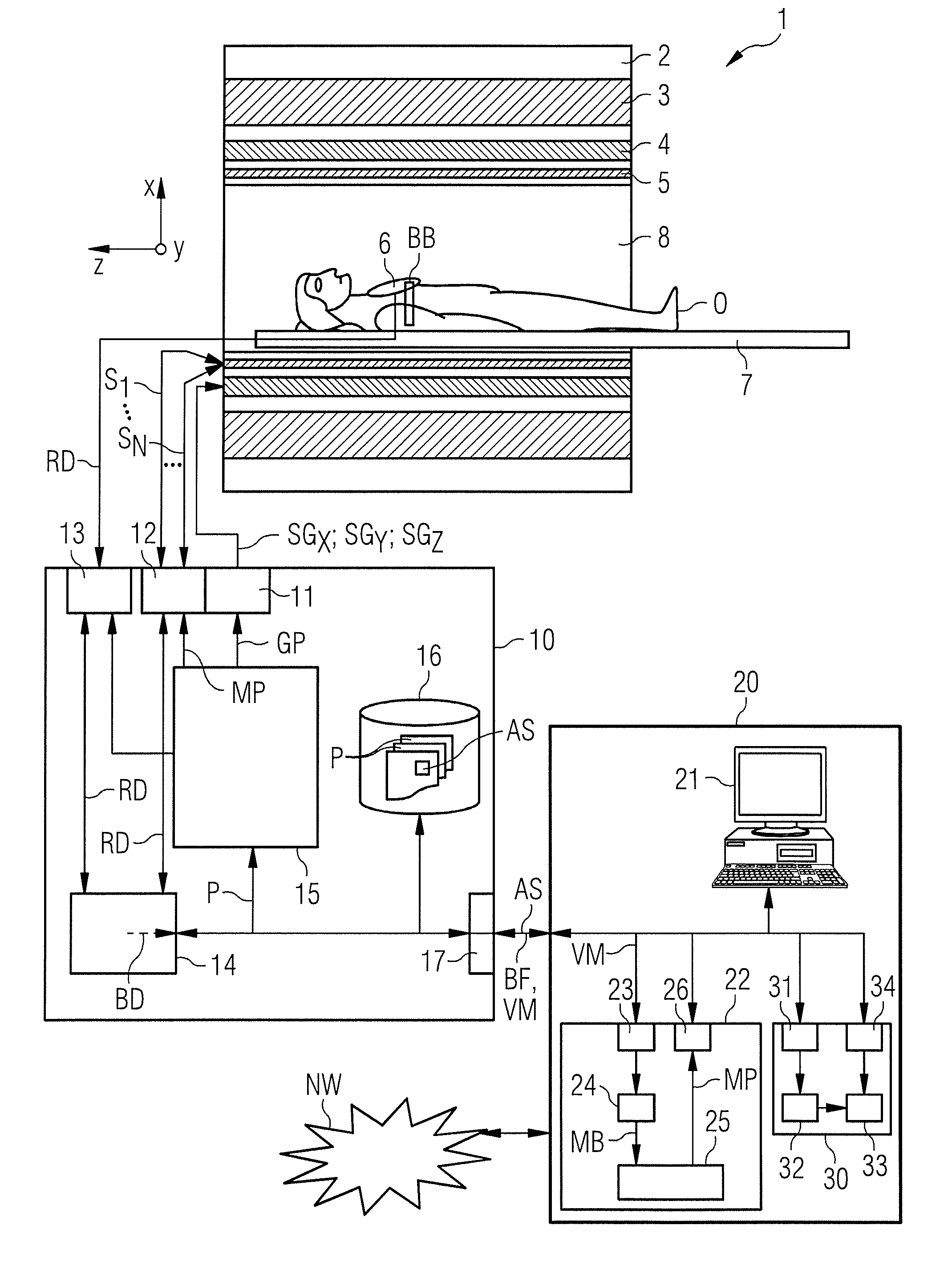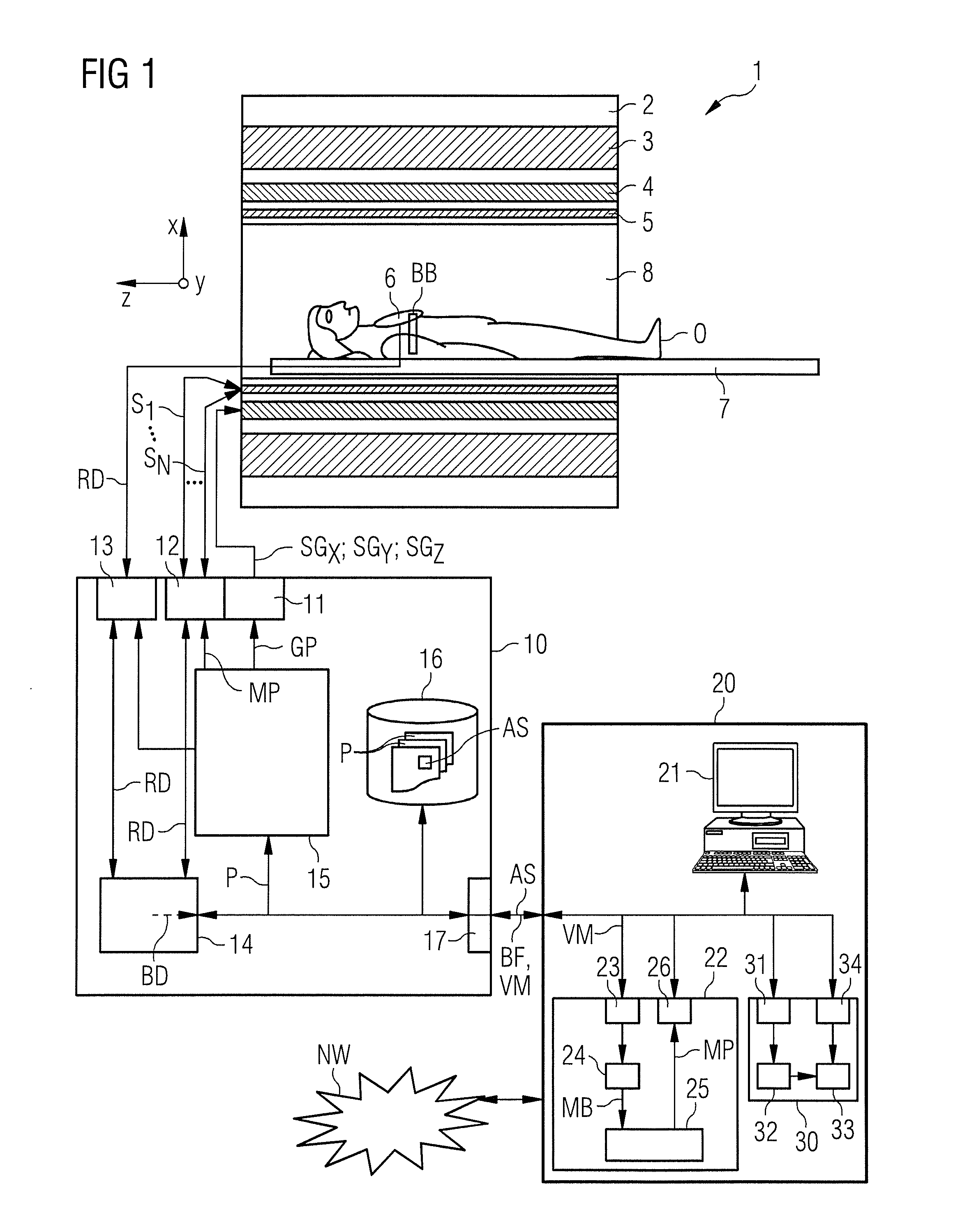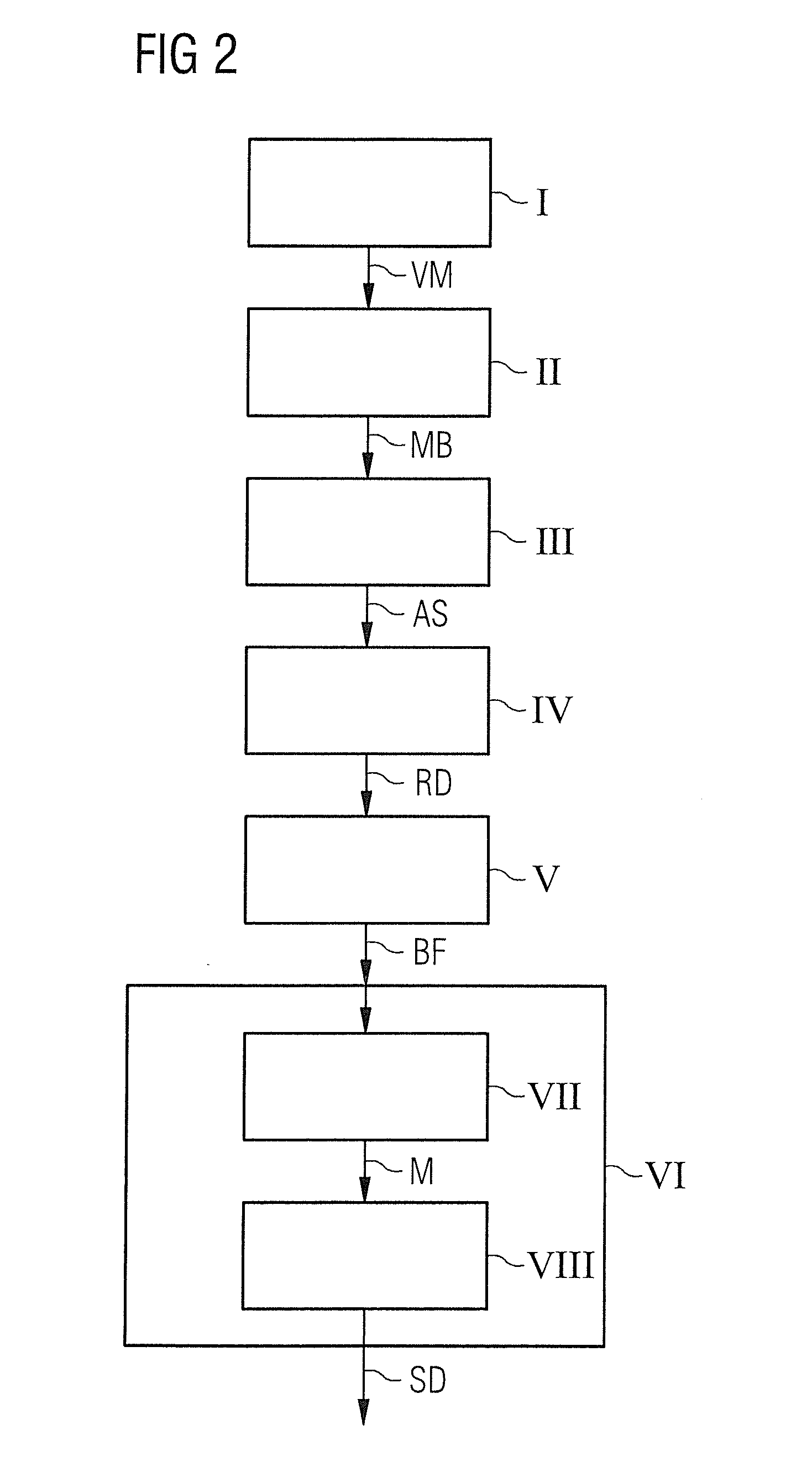Method for determining a magnetic resonance control sequence, and magnetic resonance system operable according to the control sequence
- Summary
- Abstract
- Description
- Claims
- Application Information
AI Technical Summary
Benefits of technology
Problems solved by technology
Method used
Image
Examples
Embodiment Construction
[0032]A magnetic resonance system 1 is schematically depicted in FIG. 1. The system 1 includes the actual magnetic resonance scanner 2 with an examination space 8 or patient tunnel located therein. A bed 7 can be moved into this patient tunnel 8, such that during an examination an examination subject O (for example a patient lying atop the bed 7) can be supported at a defined position within the magnetic resonance scanner 2 relative to the magnet system and radio-frequency system arranged therein and / or is movable between different positions during a measurement.
[0033]Basic components of the magnetic resonance scanner 2 are a basic field magnet 3, a gradient system 4 with magnetic field gradient coils in order to apply arbitrary magnetic field gradients in the x-, y- and z-directions, as well as a whole-body radio-frequency coil 5 (or, respectively, body coil). The reception of magnetic resonance signals produced in the examination subject O can take place via the whole-body coil 5 ...
PUM
 Login to View More
Login to View More Abstract
Description
Claims
Application Information
 Login to View More
Login to View More - R&D
- Intellectual Property
- Life Sciences
- Materials
- Tech Scout
- Unparalleled Data Quality
- Higher Quality Content
- 60% Fewer Hallucinations
Browse by: Latest US Patents, China's latest patents, Technical Efficacy Thesaurus, Application Domain, Technology Topic, Popular Technical Reports.
© 2025 PatSnap. All rights reserved.Legal|Privacy policy|Modern Slavery Act Transparency Statement|Sitemap|About US| Contact US: help@patsnap.com



